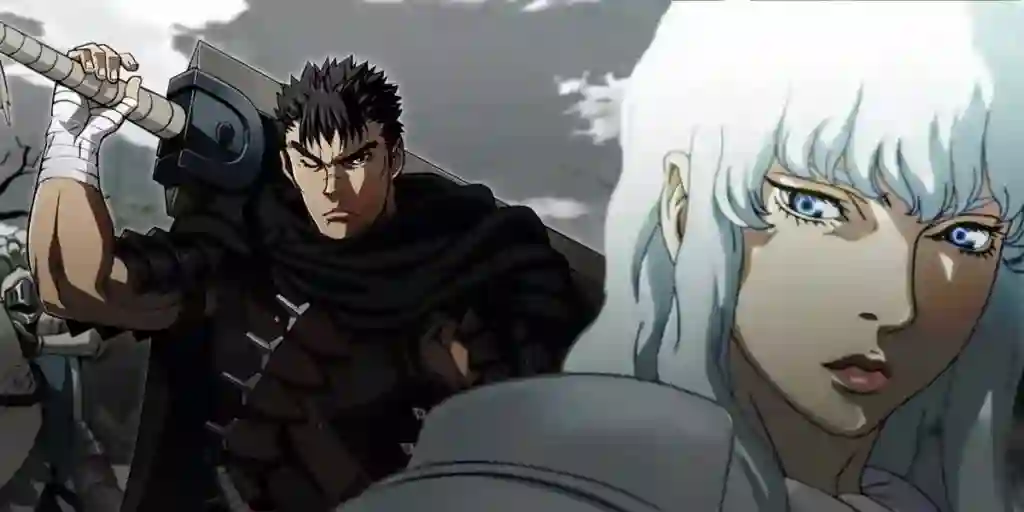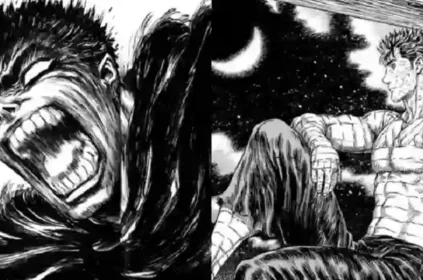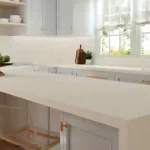In the realm of manga, few works stand as towering achievements of artistic brilliance as Berserk, created by the late Kentaro Miura. Beyond its gripping narrative and complex characters, Berserk’s unparalleled visual impact is a testament to Miura’s mastery of panel composition. In this exploration, we delve into the artistic intricacies of Berserk’s panel composition, unraveling the visual language that elevates the series to the pinnacle of the manga medium.
Visual Storytelling as a Pinnacle:
Miura’s approach to panel composition goes beyond mere illustration; it is a form of visual storytelling that transcends traditional manga conventions. Each page of Berserk is meticulously crafted, with panel layouts that guide readers through the narrative with cinematic precision. The use of visual elements, pacing, and the arrangement of panels create a seamless fusion of art and storytelling, immersing readers in a world where the artistry itself becomes a narrative force.
Dynamic Pacing and Flow:
One of Miura’s most remarkable strengths lies in his ability to control the pacing and flow of the narrative through panel composition. Berserk is known for its dynamic and varied pacing, which is achieved through the strategic arrangement of panels. Miura utilizes panel size, spacing, and placement to dictate the rhythm of the story, creating a visual symphony that resonates with the emotional beats of the narrative.
During intense action sequences, panels may be arranged in rapid succession, conveying a sense of urgency and kinetic energy. Conversely, moments of introspection or quiet reflection are accentuated by the deliberate spacing of panels, allowing readers to linger on the emotional weight of a scene. The ebb and flow of Berserk’s pacing, orchestrated through panel composition, contribute to its immersive storytelling experience.
Cinematic Impact:
Miura’s panel composition often mirrors the techniques used in cinematography, infusing Berserk with a cinematic quality that heightens its visual impact. The series employs a wide range of shot types—from sweeping, panoramic vistas to intimate close-ups—that emulate the language of film. This cinematic approach elevates Berserk beyond the constraints of the manga medium, creating an experience that is both visually stunning and narratively engaging.
In pivotal moments, Miura employs full-page spreads that command attention and evoke the grandiosity of a cinematic frame. These carefully orchestrated visuals become indelible snapshots, imprinting the emotional intensity of key scenes in the minds of readers. The cinematic impact of Berserk’s panel composition is a testament to Miura’s ability to harness the visual language of film and seamlessly integrate it into the manga form.
Details in the Dark:
Berserk’s dark and atmospheric aesthetic is a signature element that permeates every aspect of the series, including its panel composition. Miura’s attention to detail in depicting shadows, textures, and expressions contributes to the series’ immersive and evocative atmosphere. The use of stark contrasts between light and shadow heightens the impact of key moments, emphasizing the brutal realities and supernatural elements that define the Berserk universe.
Miura’s meticulous rendering of details, from the intricacies of armor and weaponry to the haunting visages of demonic entities, showcases his commitment to visual storytelling. The level of detail in Berserk’s panel composition not only enhances the visual experience but also adds layers of depth to the narrative, inviting readers to explore the nuances of the dark and visually rich world Miura has crafted.
Symbolism and Composition:
Berserk’s panel composition extends beyond its narrative and aesthetic qualities to incorporate symbolism that enriches the thematic depth of the series. Miura employs recurring visual motifs, such as the Brand of Sacrifice and the imagery of demons, to reinforce key themes and foreshadow events. The deliberate placement of symbols within panels creates a visual language that speaks to the overarching philosophy and mythos of Berserk.
Additionally, Miura utilizes compositional techniques to convey psychological states and character dynamics. The arrangement of characters within panels, their body language, and the use of negative space contribute to the visual characterization that goes beyond dialogue and narrative exposition. In this way, Berserk’s panel composition becomes a means of conveying subtext and exploring the inner workings of its characters.
Conclusion:
Kentaro Miura’s unparalleled mastery of panel composition in Berserk stands as a testament to his artistic genius. The series goes beyond the traditional boundaries of manga, creating a visual symphony that engages readers on a profound level. The dynamic pacing, cinematic impact, attention to detail, and symbolic richness of Berserk’s panel composition coalesce into an immersive storytelling experience that remains unparalleled in the manga medium.
As readers traverse the dark and haunting landscapes of Berserk, they bear witness to an artist at the peak of his craft. Miura’s legacy is not only in the narrative he penned but in the visual language he forged—an artistic legacy that continues to captivate and inspire manga enthusiasts and storytellers alike. In Berserk’s panel composition, we find not just illustrations on a page but a visual symphony that echoes the profound depths of storytelling mastery achieved by Kentaro Miura.















